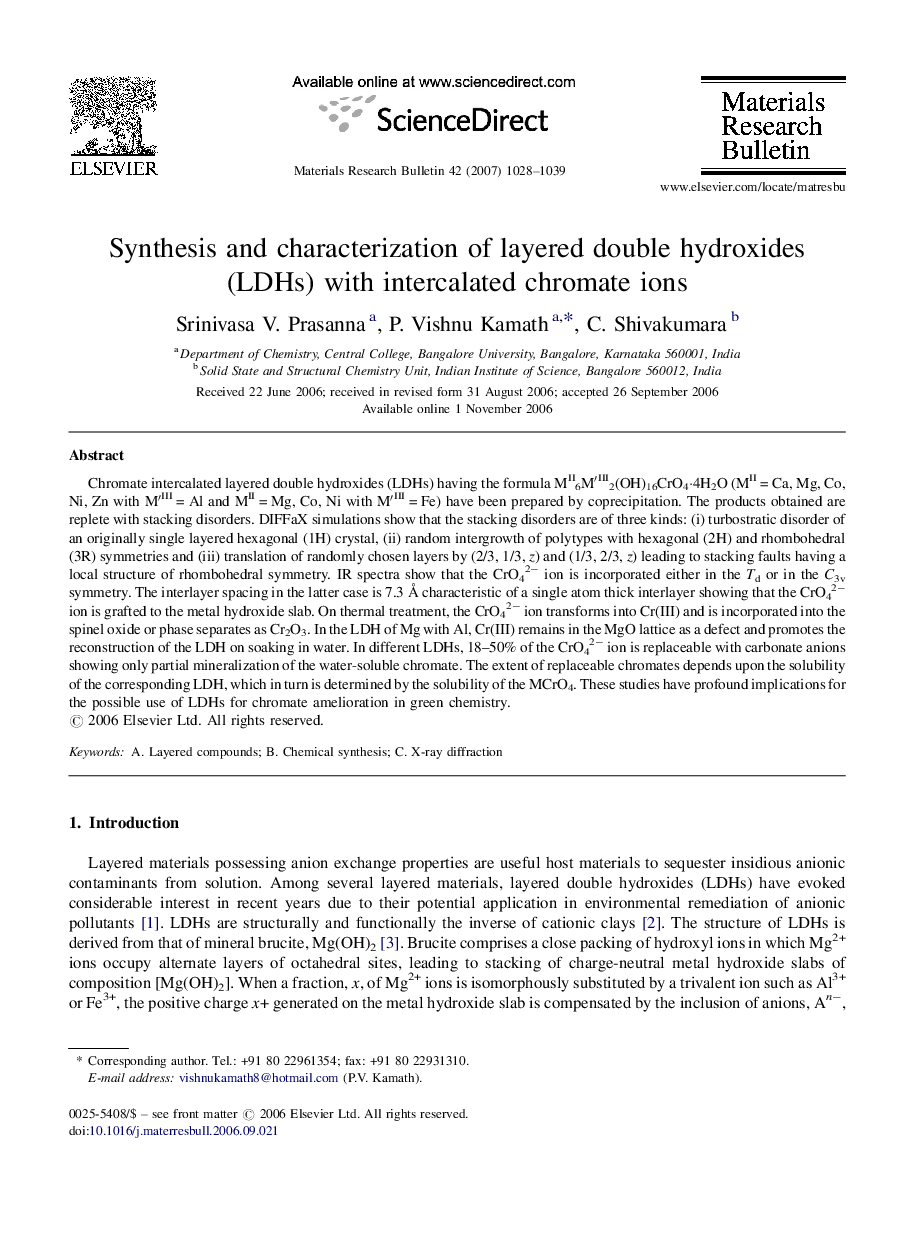| کد مقاله | کد نشریه | سال انتشار | مقاله انگلیسی | نسخه تمام متن |
|---|---|---|---|---|
| 1492122 | 992370 | 2007 | 12 صفحه PDF | دانلود رایگان |

Chromate intercalated layered double hydroxides (LDHs) having the formula MII6M′III2(OH)16CrO4·4H2O (MII = Ca, Mg, Co, Ni, Zn with M′III = Al and MII = Mg, Co, Ni with M′III = Fe) have been prepared by coprecipitation. The products obtained are replete with stacking disorders. DIFFaX simulations show that the stacking disorders are of three kinds: (i) turbostratic disorder of an originally single layered hexagonal (1H) crystal, (ii) random intergrowth of polytypes with hexagonal (2H) and rhombohedral (3R) symmetries and (iii) translation of randomly chosen layers by (2/3, 1/3, z) and (1/3, 2/3, z) leading to stacking faults having a local structure of rhombohedral symmetry. IR spectra show that the CrO42− ion is incorporated either in the Td or in the C3v symmetry. The interlayer spacing in the latter case is 7.3 Å characteristic of a single atom thick interlayer showing that the CrO42− ion is grafted to the metal hydroxide slab. On thermal treatment, the CrO42− ion transforms into Cr(III) and is incorporated into the spinel oxide or phase separates as Cr2O3. In the LDH of Mg with Al, Cr(III) remains in the MgO lattice as a defect and promotes the reconstruction of the LDH on soaking in water. In different LDHs, 18–50% of the CrO42− ion is replaceable with carbonate anions showing only partial mineralization of the water-soluble chromate. The extent of replaceable chromates depends upon the solubility of the corresponding LDH, which in turn is determined by the solubility of the MCrO4. These studies have profound implications for the possible use of LDHs for chromate amelioration in green chemistry.
Journal: Materials Research Bulletin - Volume 42, Issue 6, 5 June 2007, Pages 1028–1039